|
Displaying items by tag: Sotheby's

Sotheby’s is seeking approval from its shareholders for a $15.3m pay package for five of its executive officers for 2010. Details are given in the firm’s proxy statement, issued in advance of its Annual General Meeting (AGM) on 5 May.
The total compensation, up 125% from $6.8m in 2009, includes base salaries, plus other annual remunerations such as cash incentive bonuses and awards of Sotheby’s shares. These additional perks take the total level of pay to at least five times these executives’ base salary, and nearly nine times for the chief executive William Ruprecht.
The breakdown of total remuneration for 2010 is: $6m for Ruprecht, up from $2.4m in 2009; $2.5m for William Sheridan, chief financial officer (2009: $1.1m); $3m for Bruno Vinciguerra, chief operating officer (2009: $1.5m); $2.1m for Kevin Ching, chief executive of Asia (2009: $1.1m); and $1.7m for Robin Woodhead, executive vice president and chairman of Sotheby’s International (2009: $775,000).
Also included in the AGM proxy are details of “other compensation”. These include “automobile-related expenses, including driver’s compensation” for Ruprecht of $59,952; “club dues” of $29,329 for Sheridan and “parking fees” of $5,874 for Woodhead.
Sotheby’s management “pays itself relatively well compared with companies with similar revenue”, said Wall Street analyst Aaron Mo at JMP Securities (Sotheby’s 2010 revenue was $774.3m). Other US chief executives at the $6m total compensation level for 2010 include David Mackay, chief executive of Kellogg (2010 revenue: $12.4bn); Mark Pigott, chief executive of truck manufacturer Paccar (2010 revenue: $10.3bn) and Michael McCallister, who heads up US health insurance group Humana (2010 revenue: $33.9bn). The average increase on 2009 pay for top executives at 200 major US companies was 12%, according to a study conducted by US compensation consulting firm Equilar. All the named Sotheby’s executives saw an increase of over 90%.
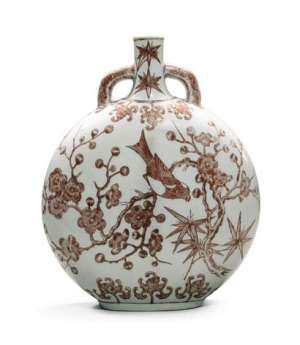
Sotheby’s presents the first of its 2011 London Sales of Fine Chinese Ceramics and Works of Art. The auction will feature 343 lots and will take place in London on Wednesday, May 11th, 2011. Every item in the sale has been meticulously selected as an iconic example of its genre and in total the auction is expected to realise in excess of £11 million.
The highlight of the auction is an important and rare 12th century ‘Ice Crackle Guan’ vase of the Southern Song Dynasty. The vase, which was originally created for the Imperial Chinese court, formed part of the collection of Mr and Mrs Alfred Clark, who rank among the greatest English collectors of Chinese ceramics of the early 20th century. This is the first example of the archetypal ‘Guan’ style, from the official kilns of Hangzhou to appear at auction and it is estimated at £2,500,000-£3,000,000. The Song dynasty (960-1279) was the classic period which defined Chinese style and informed concepts of ceramic excellence the world over. ‘Guan’, the official ware of the Southern Song court, is perhaps the most admired and desirable of all Chinese ceramics. The vase combines the exceedingly rare combination of an archaic bronze shape, with a glaze displaying the fabled ‘ice crackle’. Its luminescent surface evokes light shining through superimposed shards of ice – the most rarified of the ‘Guan’ effects.
Sotheby’s will also offer for sale a spectacular and extremely rare five-piece doucai Qianlong period altar garniture. Only one other comparable example appears to be recorded.** Consisting of a tripod incense holder, two candleholders and a pair of gu-form vases, the garniture is decorated with the distinctive doucai technique, developed in the Ming dynasty. Each item is finely painted in bright enamels with beribboned Eight Buddhist Emblems, entwining lotus scrolls, plaintain leaves, lotus lappets and ruyi-headed borders. All are inscribed with six-character Qianlong seal marks. The garniture was commissioned by the Qing Court for use in one of the Imperial family’s ancestral halls and is estimated at £800,000-£1,200,000.
Aside from its Imperial history, the garniture has a remarkable provenance, having been acquired by Lord Herbert Kitchener, an avid collector of Chinese antiques, in the early 20th Century.
Kitchener presented the objects to Sir Thomas Hohler, the highly decorated Field Marshall and proconsul who won fame for his imperial campaigns and central role in the First World War.
A further highlight of the sale is a Rare magnificent Qianlong seal mark and period moonflask (est. £300,000 to £500,000). The vessel is distinguished by a rare copper-red underglaze and bears the striking motif of a magpie perched on a gnarled prunus branch – a device more often associated with blue and white ceramics. The flask’s flattened globular body rises from a short oval foot to a waisted neck flanked by a pair of ruyi handles. The vase is closely related to a vessel from the Palace Museum in Beijing. Another is held in the Chinese Ceramics collection of the Rijksmuseum in Amsterdam. Both in shape and design this flask closely follows an early Ming blue and white original. The flat, moonflask form is highly prized - an adaptation of much earlier foreign pilgrim bottles made from leather. During the Tang dynasty these became the inspiration for ceramic replicas and it is believed they were designed to contain wine.
* Estimates do not include buyer’s premium
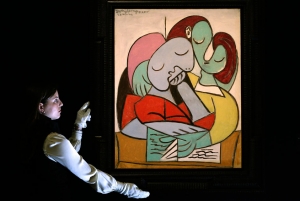
Sotheby's kicked off a two-week series of major art auctions in New York on Tuesday by selling Pablo Picasso's rainbow-hued double portrait, "Women Reading," for $21.3 million.
In this 1934 painting, Picasso's mistress, Marie-Thérèse Walter, and her sister, Genevieve, hover over an open book, their faces painted in cheery shades of sky blue and mint green. Sotheby's expected the painting to sell for between $25 million and $35 million, but only two bidders joined in the competition and the dogfight was short.
The winner was a Chinese man who wore blue jeans and cradled a cell phone to his ear as he bid from his seat in the house's Manhattan salesroom. Afterward, he declined to give his name.
Sotheby's tried to leverage Picasso's global appeal by packing its $170.4 million sale with pieces spanning the artist's seven-decade career, from early Picasso portraits of rosy-cheeked children to late-era nudes. The strategy largely worked: Eight of the sale's 10 Picassos found buyers, including a 1970 portrait, "Couple with a Guitar," that came from the estate of San Francisco collector Dodie Rosekrans and sold to a Russian telephone bidder for $9.6 million, just below its $10 million low estimate. Picasso's 1930 view of his first wife, Olga, "Woman," also sold to a telephone bidder for $7.9 million, over its $5 million high estimate.
But the mood in the packed salesroom felt fickle off and on, with 15 of the sale's 59 works going unsold—a sign that seasoned buyers crave masterpieces and are willing to bypass anything deemed ho-hum.
Paul Gauguin's "Young Tahitian," a nine-inch-tall wooden bust sculpted during the artist's first trip to Tahiti around 1893, sold following a single bid for $11.2 million, over its $10 million low estimate. Gauguin, who rarely made sculptures, adorned this tamanu-wood carving of a child with several red-coral and shell necklaces. In an endearing twist, he also gave the work to the daughter of his friend and art critic Jean Dolent.
Expressionist Alexej von Jawlensky's vivid portrait his wife from 1912, "Woman with a Green Fan," sold for $11.2 million, within its $8 million to $12 million estimate. Paul Delvaux's surrealist view of two lounging women from 1946, "Caryatids," sold for $9 million, well over its $5 million high estimate.

Sotheby’s announces that it will offer for sale The Duerckheim Collection, a collection of the most significant and defining German Art of the 1960s and 1970s ever to come to market, in the forthcoming Contemporary Art Auction Series in June. This collection represents a remarkably detailed and complete survey of major advancements in the recent history of European art and features the most important assemblage of 1960s paintings by Georg Baselitz in private hands; an outstanding history of Gerhard Richter's early Photo paintings; and notably rare and early works by Sigmar Polke, Blinky Palermo, Konrad Lueg, Jörg Immendorff and Eugen Schönebeck, among others. The offering is also particularly remarkable for the outstanding quality and exceptional condition of the individual pieces. Together, these works provide a very special anthology to an era of momentous change in Germany and the radical aesthetic and conceptual advancements that became so seminal in shaping the course of art history in the 20th century. These 59 artworks, which have not appeared on the market for over 30 years, are expected to realise in excess of £33 million and will be offered in the Contemporary Art Evening and Contemporary Art Day Auctions on Wednesday, June 29, 2011 and Thursday, June 30, 2011.
Discussing this extraordinary collection of German Art, Cheyenne Westphal, Sotheby’s Head of Contemporary Art Europe, commented: “Presenting this definitive collection of German Art of the 1960s and 1970s for sale at auction is a great privilege for Sotheby’s. Historical perspective, extensive scholarship and renowned international exhibitions have long proved the enormous contributions to art history made by Georg Baselitz, Gerhard Richter and Sigmar Polke. To see masterpieces by these artists alongside works by their peers Blinky Palermo, Jörg Immendorff, Konrad Lueg and Eugen Schönebeck gives an insight into German Art of the 1960s which has not been seen in London since the 1985 landmark exhibition “German Art of the 20th Century” at the Royal Academy. The exhibition at Sotheby’s will bring these museum quality works together in public for the first time and the auction will be an exciting crescendo to the story of the Duerckheim Collection.”
The Collector Count Christian Duerckheim-Ketelhodt:
Count Duerckheim started collecting German contemporary art in 1970 after seeing a “Hero” print by Baselitz which was used to illustrate the first edition of “ZET”, a publication for literature and graphic works. This marked the collector’s ongoing fascination with the work of Baselitz and initiated an intense period of collecting in the 1970s and early 1980s during which Count Duerckheim was able to compile a complete survey of the art of his generation. He recalls feeling that he should have started buying the works at the time of their execution in the 1960s and therefore made a conscious effort to collect the artist’s earlier work which was fortunately still available. The ensemble is a resounding testament to his vision and the overall coherence of the collection demonstrates Count Duerckheim’s expert understanding, curatorial intelligence, judgment, connoisseurship and passion. It features art historically important pieces, which look back to a period when artists such as Georg Baselitz, Eugen Schönebeck, Gerhard Richter and Sigmar Polke had moved from East Germany to West Germany and it has since become an in-depth archive of German Art from the 1960s and early-1970s. Together they represent the new beginnings that so fundamentally altered the course of the visual arts from the dawn of the 1960s onwards. The inaugural exhibition of highlights from this collection will be staged at Sotheby’s New York from May 6th until May 9th and represents the first time an international exhibition of this museum-quality collection will be on view to the public in over 30 years.
Highlights in the Collection:
One of the major highlights of the auction will be Georg Baselitz’s oil on canvas Die Grosse Nacht im Eimer (The Big Night Down the Drain), executed in 1962-63., which is the most important German work of art of the post war period to come to the market. It is the sister painting to a work of the same title housed in the Museum Ludwig in Cologne (Ludwig donation), and when that painting was unveiled in 1963 at the artist's first solo exhibition and the inaugural show of Michael Werner and Benjamin Katz's gallery in West Berlin, the Ludwig painting was confiscated by the Director of Public Prosecutions on the grounds of "infringement of public morality", and the artist and gallerists were fined. It is widely recognised as the genesis of the artist's entire illustrious canon, directly anticipating later series such as the 'Hero' paintings, and related works are held in the world's most prestigious collections, such as a 1963 watercolour of the same title that was included in the Royal Academy exhibition (cat no. 37) and is now in MoMA (gift of R. L. B. Tobin, 1987). Executed when Baselitz was around 24 years old, Die Grosse Nacht im Eimer was inspired by a newspaper article about an Irish poet, Brendan Behan, who gave a reading of his poetry drunk on stage with his trouser flies open. For the artist Die Grosse Nacht im Eimer represents the ultimate provocation, which he of course considers the ultimate and inevitable purpose of his painting. At the press conference for the Baselitz Remix exhibition at the Albertina in Vienna in 2007 the artist declared that "My first painting, my first attempt at painting, was 'The Big Night Down the Drain'", and in the 2007 Royal Academy retrospective catalogue Norman Rosenthal observed that "The artist recently stated in public that perhaps he never has and never will make a finer painting than The Big Night Down the Drain.". The work is estimated at £2-3 million.
From this most important private archive of 1960s paintings by Georg Baselitz in existence, another principal highlight is his oil on canvas Spekulatius, executed in 1965 and measuring 162.7 by 132cm, which is emblematic of the artist’s celebrated ‘Hero’ series**. The painting, which is estimated at £1,800,000–2,500,000, stands as one the most significant masterworks both of the series and of the revered artist’s entire illustrious career. It belongs squarely at the centre of the seminal series of 'Hero Paintings' or ‘New Types’ that were executed between 1965 and 1966. As is exemplified in this painting, the vanquished, depleted protagonists in this cycle are survivors in a devastated post-war Germany, whose tragic isolation invokes the specific heritage of German Romanticism from Goethe to Caspar David Friedrich. Created by the artist in his mid-twenties and living in the German capital newly segregated by the Berlin Wall, Spekulatius is directly comparable to examples of the cycle that are now housed in the Tate Gallery in London and the Louisiana Museum of Modern Art in Humlebaek. Furthermore, the ‘Hero’ paintings have achieved three of the top four prices for the artist at auction, including the record price of $4,633,000 at Sotheby’s New York on 14th May 2008.
Another important work by Baselitz in the collection is his oil on canvas Das Idol, measuring 100.3 by 81.7cm, which carries an estimate of £600,000–800,000. Executed in the year following the erection of the Berlin Wall and the remarkable creation of a 26 year old, Das Idol of 1964 confronts the viewer as a searing existential vision of imagery that is without precedent.
Headlining the works in the collection by Sigmar Polke is his Dschungel, of 1967 and measuring 160 by 245.5cm, which is estimated at £3,000,000-4,000,000. By far the largest of the artist’s legendary Rasterbilder (dot paintings) from the 1960s ever to appear for public sale, this painting has been virtually unknown since its execution and only reproduced in black and white. This monumental tableau is a masterful paragon of Polke’s attempt to deconstruct the illusions and paradoxes of painting, and is one of his most important works. In the context of Pop Art and Kapitalistischer Realismus, this masterpiece questions the mechanics of the art of painting and shares the rebellious attitude inherent to Pop Art.
The work of an exceptional 26 year old who had moved to West Germany from the East in 1953, where he was to win the Young German Art Prize and have his first solo shows in Berlin and Düsseldorf immediately prior to this work in 1966. However, his student career, spanning 1961 to 1967 at the Kunstakademie Düsseldorf, was paramount in shaping his immensely dynamic approach to art. In 1963 with his friends Gerhard Richter and Konrad Lueg, Polke initiated the quasi movement Kapitalistischer Realismus that, in its title alone, was a pithy riposte to the state-sponsored 'Socialist Realism' of the GDR. Their first exhibition was entitled Life with Pop – A Demonstration for Capitalist Realism: clearly these young men saw art as a means to effect political and social ends. Initiated during this formative period, the Rasterbilder works not only critique issues of perception and reality in a media-obsessed world but also challenge global methods of communication as agents of social change. Having been born in the abysmally dark shadow of Nazism, Polke had lived on both sides of a divided Germany that was the crucible of the Cold War. Hence he knew extremely well the manipulative power of the media and the potential of propaganda.
A further highlight by Polke is his oil and dispersion on canvas Stadtbild II, signed and dated 68 on the reverse, 151 by 125.5cm, which is estimated at £2,000,000–3,000,000. The work showing the New York skyline is a brilliant crescendo of Polke’s late- 1960s output, revealing fascinating parallels and developments in his use of media and treatment of subject matter.
A triumph of Gerhard Richter’s ground breaking 1960s Photopainting, Telefonierender stands as the epitome of both cerebral and painterly innovation that characterised the artist’s output of this period. The work exemplifies his inimitable technique and historically significant approach to source material. Executed in 1965 on an impressive scale (70 by 130cm.) and via exquisite technical accomplishment, this is an historic work that will remain central to the genesis of Richter’s remarkable contribution to visual culture. Telefonierender represents a moment when Richter’s ambition had advanced beyond simply a European riposte to the advent of American Pop, and had developed into an independent, highly-sophisticated philosophy. Although Richter’s original source image for Telefonierender, is a newspaper clipping of an anonymous man engaged in the quotidian action of speaking into a telephone, his painterly manipulation of the man’s features transforms his specific anonymity into a more encompassing, general facelessness.
A readily feasible identification of Richter’s unknowable protagonist is Elvis Presley, with whom the Man on the Phone bears a striking resemblance. The tonal topography and composition of Telefonierender has been dramatically blurred by the artist’s feathering of the wet paint surface with a fine dry brush to inscribe thousands of horizontal furrows in a consummate exhibition of sfumato brushwork. With the present work Richter exposes the false autonomy and supposed objectivity ascribed to photography and challenges his audience to question and re-evaluate their perception of contemporary media. The work is estimated at £2-3 million.
Further works by Richter in the collection comprise the artist’s provocative oil on canvas Schwestern, dated 1967, measuring 65.3 by 65cm., which is an exemplary model of his appropriation of found imagery (est. £1,200,000–1,800,000); and his oil on canvas 1024 Farben, dated 1974, numbered 356/3, measuring 96.3 by 96.2cm (est. £1,000,000–1,500,000). Finally the sale will offer the second work recorded in Richter’s legendary catalogue raisonné, his oil on canvas Eisläuferin, which was previously believed to be destroyed (est. £2,000,000–3,000,000).
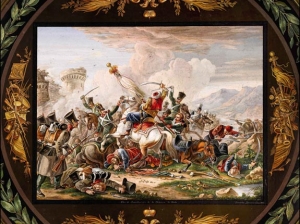
LONDON.- Sotheby’s auction of Russian Art in New York brought $16,089,390 in total today, in excess of the pre-sale high estimate and the highest result for an auction in New York in this category since April 2008*. The Russian paintings on offer were highlighted by Petr Petrovich Vereshchagin’s View of St. Petersburg from the collection of Mikhail Baryshnikov, which sold for $746,500 above a pre-sale high estimate of $500,000. The sale was led by Henryk Siemiradzki’s The Sword Dance, which achieved $2,098,500 and set a new record for the artist at auction, as well as works by Nicholas Roerich, Boris Grigoriev and Yuri Pimenov. Russian works of art were led by An Important and Rare Micromosaic Table by Gioacchino Barberi, Made for the Russian Court, 1830-33, which more than tripled its high estimate in bringing $1,986,500. Competition came down to three determined bidders, who battled for several minutes before the winning bid was cast by an anonymous purchaser over the telephone.
Russian Paintings
“We are very pleased with the results of today’s sale, as we continue to see exceptional works perform well” commented Sonya Bekkerman, Head of Sotheby’s Russian Paintings department. “This sale will be followed by our auction of Important Russian Art in London this June and in New York this November, which will focus on bringing more top-quality works to our clients.”
The morning session kicked off with the sale of Petr Petrovich Vereshchagin’s View of St. Petersburg from the collection of Mikhail Baryshnikov, which brought $746,500, well in excess of its $500,000 high estimate. Five phone bidders vied for the work–whose proceeds will benefit the Baryshnikov Arts Center in New York City–before it finally sold over the phone to a German private collector.
Five lots later, Henryk Siemiradzki’s work The Sword Dance more than doubled its pre sale high estimate in achieving an impressive $2,098,500, marking a new record for the artist at auction. On offer from the Slotkowski Collection, The Sword Dance is one of the 19th-century Polish artist’s most recognizable and accomplished compositions.
Works from the 20th century were led by Nicholas Roerich’s The Novgorod Market from Sadko, which sold for $842,500, and Boris Grigoriev’s Boy in a Sailor Suit, which achieved $782,500–both well in excess of their pre-sale high estimates. Soviet Realist works by Yuri Pimenov were highlighted by The Pianist, which set a new auction record for a work on paper by the artist in selling for $602,500. Sotheby’s now holds the auction records for both a painting and work on paper by Pimenov.
Russian Works of Art
“Today’s sale demonstrated that a strong demand for unique and interesting material persists in the market for Russian works of art,” commented Karen Kettering, Vice President and Senior Specialist in Sotheby’s Russian Works of Art department. “We continue to achieve extraordinary results for fresh objects, many of which have been hidden away in private collections for years. We will continue to focus on sourcing such material and bringing it to auction for our clients.”
The works of art on offer opened with fierce competition for a group of Soviet porcelain figures from the Lomonosov State Porcelain Factory, Leningrad. The group was led by a Pair of Very Rare Soviet Porcelain Figures: A Young Blacksmith and a Young Thresher, circa 1926 that soared past a high estimate of $18,000 to sell for $188,500. A Rare Soviet Porcelain Figure: The Apple Seller, circa 1927, was also sought-after by multiple bidders, driving the final price to $98,500, more than ten times the high estimate of $9,000.
An Important and Rare Micromosaic Table by Gioacchino Barberi, Made for the Russian Court, 1830-33 led the afternoon session in achieving $1,986,500–more than three times the high estimate of $600,000–and set a record for any mosaic table at auction. Beyond its artistry and remarkable construction, Sotheby’s intensive research into the history of the table suggests that it was made for Nicholas I, Emperor of Russia from 1825-55, or a member of his court.
Other remarkable results for the works of art on offer include A Monumental Russian Bronze Group: Arabic Horse Games, which set a new record for Evgeny Lanceray in selling for $482,500 (est. $140/160,000). A Fabergé Study of Cornflower and Oats in a Rock Crystal Vase, Workmaster Henrik Wigström, St. Petersburg, circa 1910 brought $662,500, nearly nine times the high estimate of $75,000.
*Pre-sale estimates do not include buyer’s premium

The HK$3.49 billion tally for its 8-day Asian sales in Hong Kong -- now considered the world's third most important art auction hub after New York and London, was the firm's best season ever underpinned by strong Chinese buyers -- eclipsing even its blockbuster $400 million autumn season last October.
But beneath the banner results were some signs of weakness in the red-hot Chinese ceramics market that is now a cornerstone of Sotheby's biannual and closely watched Asian sales.
A major collection of Chinese ceramics, seen as one of the best to be sold in decades, failed to live up to expectations in a conspicuous setback for the market, with 30 percent of the porcelain going unsold amid muted bidding, while a collection of Chinese imperial objets d'art including ancient jades, a gilt dragon and a golden robe ended up 55 percent unsold.
The Meiyintang collection, assembled over half a century by Swiss pharmaceutical tycoons, the Zuellig brothers, was seen to be perhaps the best remaining classic Western collection of Ming and Qing ceramics, but flaws in a few major works, tighter credit requirements for buyers and sky-high estimates weighed on sentiment, dealers and collectors said.
"I think they (Sotheby's) pushed a bit too hard on the prices," said Nader Rasti, a Western dealer of Asian antiques.
One exceptional piece -- an eight-inch tall Qing vase with a brilliantly painted pair of golden pheasants, near flawless save for a crack on the stem fastened by rivets, had been expected to fetch $23 million, but bidding spluttered after the opening price was set at HK$100 million.
The so-called "falangcai" vase with exquisite enamelling, hammered off in 1997 for just HK$9 million, was sold privately after the auction for HK$200 million, Sotheby's said.

A 1934 Pablo Picasso painting of his mistress may fetch as much as $35 million at Sotheby’s (BID) in New York next month as auction houses aim to capitalize on buyers’ appetite for iconic 20th-century art.
“Femmes Lisant (Deux Personnages)” depicts Marie-Therese Walter as a blue-faced, supple figure reading a book with another woman. It’s the top lot in Sotheby’s Impressionist and modern art sale on May 3. The evening auction is expected to tally more than $150 million, the New York-based company said.
The market in this mistress has surged in the past year. The 1932 “Nude, Green Leaves and Bust” went for $106.5 million -- a record for any work of art at auction -- at Christie’s International in New York last May. Sotheby’s in London sold the 1932 “La Lecture” for 25.2 million pounds ($40.6 million) in February. Gagosian gallery will open the “Picasso and Marie- Therese: L’amour fou” exhibition on April 14 in New York’s Chelsea district.
“These are images of desire and rapture,” said Simon Shaw, senior vice president and head of Sotheby’s Impressionist and modern art department in New York. Referring to “La Lecture,” he said, “the picture we just sold generated a huge competition; there were seven bidders.”
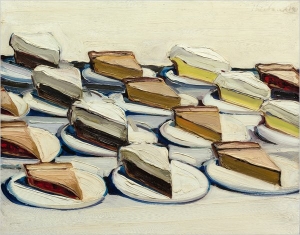
In the auction world memories are short and relationships fickle. From season to season there is no way to predict which auction house will win the prized property, and it often comes down to the most lucrative deal a firm can offer the seller, although occasionally a clever marketing strategy can make the difference.
Four years after Christie’s sale of art and objects belonging to Allan Stone, the obsessive collector and art dealer who died in 2006, one might assume that another Stone sale would go to Christie’s as well.
But it is Sotheby’s that recently won a large group of artworks belonging to the Stone estate. Mr. Stone, who founded the Allan Stone Gallery 50 years ago, was an obsessive collector whose house in Purchase, N.Y., and Manhattan gallery were filled with art and objects. There were Abstract Expressionist paintings by Willem de Kooning and Franz Kline, sculptures by John Chamberlain and boxes by Joseph Cornell. (Mr. Stone also collected decorative objects by Antoni Gaudi and at one point he owned 30 Bugatti cars.) But it is a group of fine artworks — paintings, sculptures, drawings — that Sotheby’s will sell next month in two auctions on the same night.
It has divided the property into Volume 1 and Volume 2. Both sales will take place on May 9, the night before Sotheby’s contemporary-art auction.
Volume 1 will include the art Mr. Stone made his reputation buying and selling. For sale will be examples of works by de Kooning, Kline, Cornell and Mr. Chamberlain. Volume 2 will be devoted only to paintings and drawings by Wayne Thiebaud, whose work Mr. Stone championed. Together the two sales are expected to bring $35 million.
“We wanted a good representation of artists in his stable,” said Anthony Grant, international senior specialist of contemporary art at Sotheby’s, who said he believes the Stone heirs chose Sotheby’s over Christie’s not because of financing but because they liked the idea of a separate sale devoted only to Mr. Thiebaud.
Timing is everything in the art business, and with a major retrospective of de Kooning’s work — the first in this country since 1983 — set to open at the Museum of Modern Art in September, the price and demand for his early works are escalating. Paintings dating from 1942 to 1976 are for sale, including “Event in a Barn,” a 1947 view of a figure in an abstracted interior that is estimated at $5 million to $7 million.
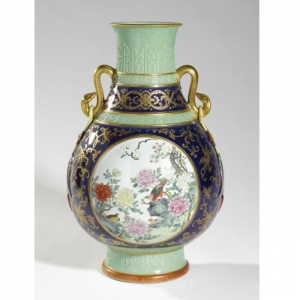
Wealthy Chinese buyers competing for their cultural heritage pushed New York’s week of Asian art to a record, topped by a delicate pear-shaped Chinese vase, estimated to fetch just $800 to $1,200.
The lot soared to $18 million, the most expensive in a dozen Asian Week auctions at Sotheby’s (BID) and Christie’s International. Together, the auction houses took in a record $202 million, 56 percent above the previous high in 2007.
Sotheby’s described the modestly-estimated vase, decorated with birds and peonies, as of “probably Republican period” (early 20th-century). Yet it had a Qianlong seal and anything of that 1736-1795 era commands higher prices, said dealers.
“It’s outstanding if it’s genuine,” said Giuseppe Eskenazi, one of the leading dealers in Chinese art.
China overtook the U.S. as the world’s biggest auction market for fine art in 2010, according to research company Artprice, benefiting from the support of its government. Last week’s sales attracted collectors from mainland China, Hong Kong and Taiwan.
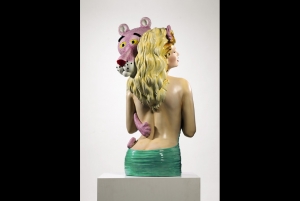
LONDON.- On the evening of 10 May 2011, Sotheby’s will offer one of the most important works by Jeff Koons ever to have appeared at auction. Pink Panther from 1988 draws on many of the themes that have come to define Koons’ output and stands as one of the outstanding achievements of his illustrious career. The porcelain sculpture is the artist’s proof from an edition of three with the other examples in the Museum of Modern Art in New York, the Museum of Contemporary Art in Chicago and a prominent private American collection, and belongs to the artist’s iconic Banality series that includes Michael Jackson and Bubbles, Bear and Policeman and Ushering in Banality. Pink Panther will appear on the front and back covers of the sale catalogue for the spring Contemporary Art Evening Auction in New York and is estimated to fetch $20/30 million*.
“Together with Balloon Dog and Bunny, Pink Panther is a 20th-century masterpiece and one of the most iconic sculptures of Jeff Koons’s oeuvre,” commented Tobias Meyer, Worldwide Head of Contemporary Art at Sotheby’s.
Representing the highest tier of Jeff Koons’ artistic achievement, Pink Panther is immediately identifiable as a masterpiece not only of the artist’s historic canon, but also of the epoch of recent Contemporary Art. It conflates the classic themes that define the artist’s output - materiality and artificiality, eroticism and naivety, popular culture and rarefied elitism – and is the model expression of one of the most innovative and influential artists of our times. Initially unveiled at Koons’ seminal show Banality, held at the Sonnabend Gallery, New York in 1988, Pink Panther has been emblematic of this remarkable series ever since, which is itself regarded as a landmark of Koons’ oeuvre.
In Pink Panther, the display of the woman’s semi-naked body is sensual. However, with the bizarrely incongruous cuddly Pink Panther toy clinging to this literal embodiment of carnal desire, Koons strikes an outrageous contrast between the competing powers of adult and childhood associations. Although the Pink Panther cartoon character was initially created by Hawley Pratt for the opening sequence of the eponymous 1963 film starring Peter Sellers as the bungling Inspector Clouseau, it was only after becoming the protagonist of its own 1960s television show that it entered the mainstream consciousness as a contemporary Pop icon.
The artist’s painstaking selection of media is central to the conceptual project, contributing directly to the importance of the work. The terms of its execution are flawless: the contrasting textures of the porcelain surfaces are rendered in dazzlingly vivid colours that reinforce the object’s artificiality, while the transparent glazes simultaneously evoke the fragility of thin glass and the ethereal nature of a reflective liquid.
*Estimates do not include buyer’s premium
|
|
|
|
|